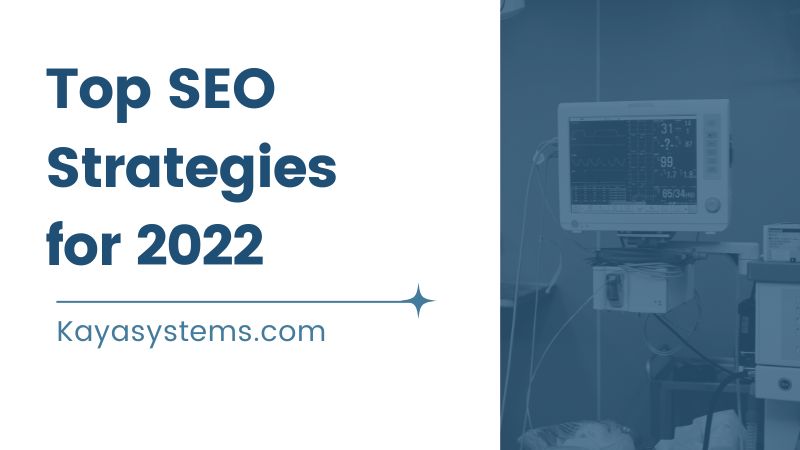
Improving page visibility and organic traffic will remain a top priority for many digital marketers in the coming year. The only constant is change, that also means that now is the ideal time to begin planning your digital marketing campaigns for the coming months. This includes everything concerning search engine optimization (SEO).
However, what worked in the past to boost your website’s ranking in the SERPs isn’t necessarily what will get you through 2022. Google has made it clear that they are working to eliminate spam and increase the number of links that contain engaging and informative content that provides a positive user experience. This means that adjusting your tactics now is the most effective way to ensure success.
1- High Quality Content
Although Google’s algorithms are updated on a regular basis, their north star has always been the same: quality. Google wants to rank and promote web pages that provide their users with useful, valuable, and relevant information. To rank higher in search results, your crew must take priority the quality of your web pages over all other considerations. If you’re not sure what quality is, Google considers the following quality indicators when ranking web pages:
- Unique reporting or analysis
- Copy that is comprehensive and topic-rich
- Content that is quick to load, interactive, and visually stable
- Internal and external links that are relevant
- Strong relevance and fulfillment of search intent.
2- Improved Page Speed
While it may appear that page speed appears on these SEO trends lists year after year, there is a reason for this. Consider it for a moment. Every year, new Android and iPhone models are released, right? As do the most recent tablets, laptops, and desktop computers. Because these devices have faster processors, they can load websites faster than before. If you are not doing your part to ensure that your website is ready, you may be alienating your audience. Furthermore, Google has already stated that page speed is a factor considered for ranking. This means that improving yours benefits both the overall user experience of your website visitors and your chances of landing a coveted page one spot in search results.
3- Focus on User Intent
When explaining SEO trends for 2022, it is also critical to discuss increasing the focus of your website on user intent. While that may sound like a lot of jargon, the bottom line is that people searching the web are looking for a specific answer to a specific issue, question, or problem. As a digital marketer and content creator, your job is to consider: How are these people going to look for that solution? And how you can format your content to meet their needs. Focusing on how to make your solution the best fit for their needs will bring in more organic traffic, keep them on your website longer, and help build trust with your target audience.
4- Target Low-Competition Keywords
When launching an SEO campaign in a highly competitive market, it may consume long time and oversight building to rank on page one, especially for competitive keywords in your industry.
In the meantime, find less competitive or long-tail keywords that share similar search intent but are more realistic to rank for to start driving traffic to your website. This often necessitates more time and research, but it is well worth it to begin earning clicks more quickly. Long term, as your site authority grows, you will be able to rank for more competitive terms.
5- Leverage Link-Building
Link building is a decades-old SEO technique, but it’s still going strong. However, you should be careful because in the past Google has penalized websites for acquiring spammy links or low quality links. If done right, it can help improve your site’s rankings.
Here’s how: Use guest blogging to share your content with the world, build quality backlinks, and boost your search rankings. Track your own broken links as well as your competitors’ broken links and collect them to replace with links to resources on your site.
6- Optimize all Images
Optimizing all images is important if you want your website to load fast. This means compressing images as much as possible without sacrificing quality. You can use a tool like Tiny PNG to achieve this. You should also optimize your images with keywords related to the context of that image to help search engines better understand your content.


 Nov 17 2022
Nov 17 2022  Posted by: admin
Posted by: admin  Posted in
Posted in